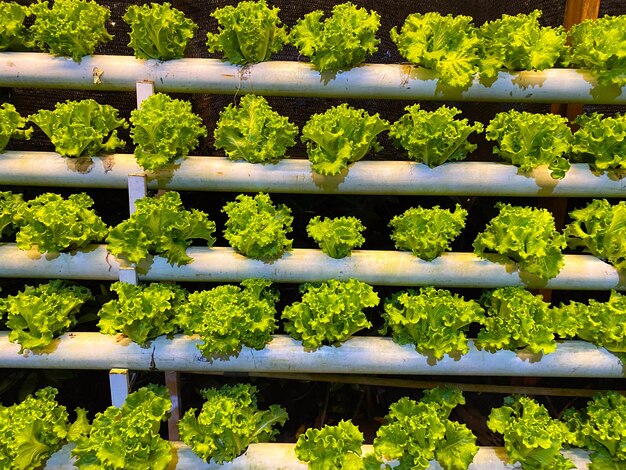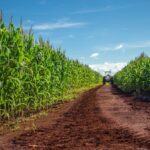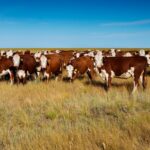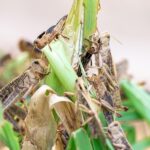As the global population rises and arable land becomes scarcer, South African farmers are facing increasing challenges. Climate change, water scarcity, and urbanization continue to put pressure on traditional farming methods. Vertical farming, an innovative and sustainable solution, presents a promising opportunity for South African farmers to grow food efficiently, while addressing these challenges head-on. Here’s why vertical farming is worth considering and how it could revolutionize the agricultural landscape in South Africa.
What is Vertical Farming?
Vertical farming is the practice of growing crops in vertically stacked layers, typically in controlled environments like buildings, shipping containers, or specially designed indoor facilities. Using techniques like hydroponics (growing plants in nutrient-rich water) and aeroponics (mist-based nutrient delivery systems), vertical farming allows for higher crop yields in smaller spaces without the need for soil. This method also enables year-round production, independent of weather conditions, making it ideal for regions with erratic climates like South Africa.
The Benefits for South African Farmers
- Efficient Use of Space
Vertical farming maximizes the use of limited land resources. By growing crops in layers, farmers can increase output on a smaller footprint, making this method especially beneficial in urban or densely populated areas. With more people moving into cities like Johannesburg and Cape Town, vertical farming can bring agriculture closer to urban consumers, reducing transportation costs and emissions. - Water Conservation
South Africa is a water-scarce country, and traditional farming uses significant amounts of this precious resource. Vertical farming requires up to 95% less water than conventional farming because it recycles water through closed-loop systems. Hydroponic setups allow plants to absorb the exact amount of water they need, with minimal waste through evaporation or runoff. - Climate Control
With vertical farming, crops grow in a controlled environment, which means they aren’t subject to the unpredictable weather patterns seen across South Africa. Extreme temperatures, droughts, and flooding can disrupt traditional farming. However, vertical farms can maintain optimal growing conditions, ensuring consistent yields year-round, regardless of external factors. - Reduced Pesticide Use
In a controlled environment, vertical farms can operate without the need for harmful pesticides, as pests have limited access to the plants. This results in healthier, pesticide-free produce, which is increasingly demanded by health-conscious South African consumers. - Increased Crop Yields
By using vertical farming methods, South African farmers can produce up to 10 times the amount of crops compared to traditional outdoor farming. The stacked design allows for more plants to be grown in the same amount of space, while precise control over light, temperature, and nutrients ensures faster and more efficient plant growth.
Key Considerations for South African Farmers
- Initial Investment Costs
One of the main challenges of vertical farming is the initial setup cost. Building or retrofitting a vertical farm requires an investment in specialized equipment, including grow lights, hydroponic or aeroponic systems, climate control technologies, and monitoring systems. However, the long-term savings in water, land, and labor costs can offset these expenses over time. - Energy Consumption
Vertical farms rely heavily on artificial lighting and climate control, which can result in high energy usage. South African farmers will need to consider renewable energy sources, such as solar power, to make their vertical farming operations more sustainable and reduce long-term energy costs. - Access to Technology and Expertise
Implementing vertical farming requires a good understanding of the technology involved. Farmers should invest in training and seek partnerships with tech companies that specialize in agricultural technology. Collaborating with research institutions can also help farmers stay up-to-date with the latest advancements in vertical farming techniques. - Crop Selection
Not all crops are suited for vertical farming. South African farmers should focus on high-value, fast-growing crops like leafy greens (lettuce, spinach, kale), herbs (basil, mint), and fruits like strawberries or tomatoes. These crops are ideal for controlled environments and can provide a quick return on investment.
The Future of Vertical Farming in South Africa
As the demand for locally-grown, sustainable food increases, vertical farming has the potential to reshape the agricultural landscape in South Africa. It offers a solution to many of the country’s agricultural challenges, including limited arable land, water shortages, and unpredictable weather patterns.
By adopting vertical farming, South African farmers can increase their production capacity, reduce environmental impacts, and contribute to food security in urban and rural areas alike. While the initial costs and technological requirements may be a hurdle, the long-term benefits make vertical farming a viable and forward-thinking investment.
For South African farmers, vertical farming presents a promising way to “grow upwards” and embrace a sustainable future. With proper planning, investment in technology, and a focus on high-value crops, vertical farming could transform agriculture in South Africa, ensuring food security and economic growth for future generations.
Now is the time for South African farmers to explore the opportunities of vertical farming and take their farming practices to new heights.
Join 'Farmers Mag' WhatsApp Channel
Get the latest Farming news and tips delivered straight to your WhatsApp
CLICK HERE TO JOIN






